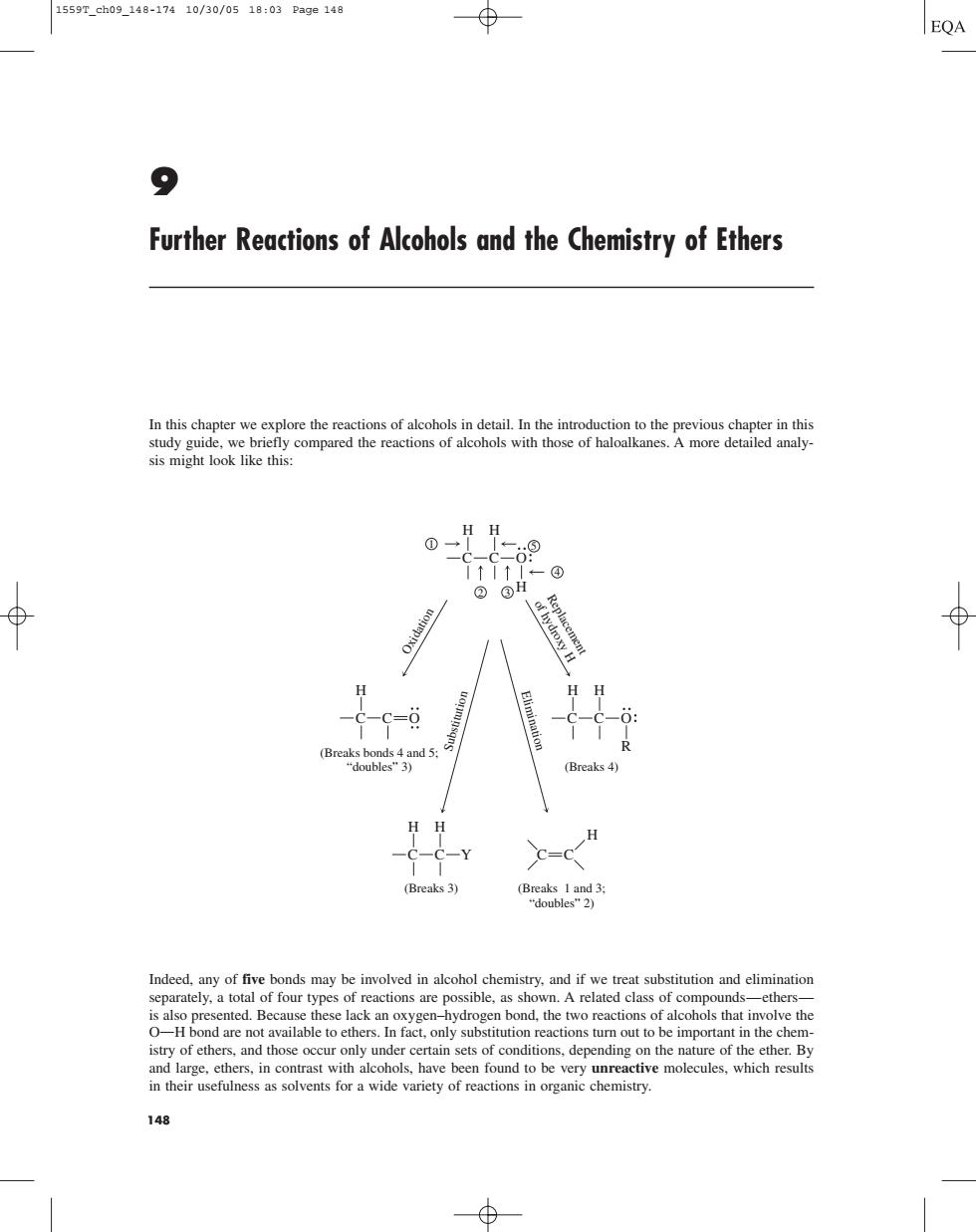正在加载图片...

15597.eh09.148-17410/30/0518:03Page149 EQA 9 Further Reactions of Alcohols and the Chemistry of Ethers sis might look like this. 二9 C-C-0 HH C=C (Breaks 3) is also ented.Because these lack an oxvgen-hvdrogen bond.the two reactions of alcohols that involve the O-HE d are no tur out to be important n th eR in their usefulness as solvents for a wide variety of reactions in organic chemistry. 148148 9 Further Reactions of Alcohols and the Chemistry of Ethers In this chapter we explore the reactions of alcohols in detail. In the introduction to the previous chapter in this study guide, we briefly compared the reactions of alcohols with those of haloalkanes. A more detailed analysis might look like this: Indeed, any of five bonds may be involved in alcohol chemistry, and if we treat substitution and elimination separately, a total of four types of reactions are possible, as shown. A related class of compounds—ethers— is also presented. Because these lack an oxygen–hydrogen bond, the two reactions of alcohols that involve the OOH bond are not available to ethers. In fact, only substitution reactions turn out to be important in the chemistry of ethers, and those occur only under certain sets of conditions, depending on the nature of the ether. By and large, ethers, in contrast with alcohols, have been found to be very unreactive molecules, which results in their usefulness as solvents for a wide variety of reactions in organic chemistry. H H C C Y C C Substitution Elimination H H H C C O 1 2 3 5 4 H H R C C O H C C O H (Breaks bonds 4 and 5; “doubles” 3) (Breaks 1 and 3; “doubles” 2) (Breaks 4) (Breaks 3) Oxidation Replacement of hydroxy H 1559T_ch09_148-174 10/30/05 18:03 Page 148